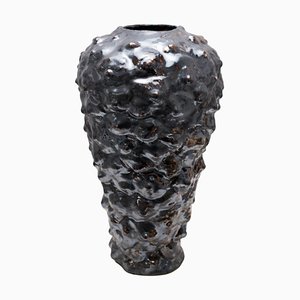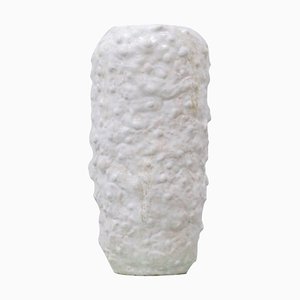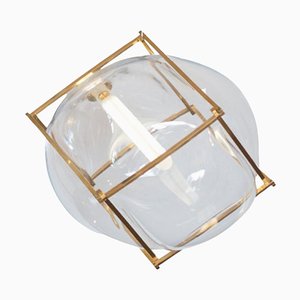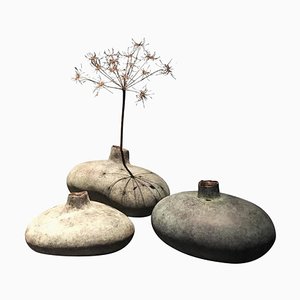
Dutch furniture designer and architect Gerrit Thomas Rietveld was born in Utrecht in 1881. He began working in his father’s workshop as a boy, and from 1906 to 1911 worked as a draftsman for Utrecht jeweler C. J. Begeer. From 1904 to 1908, he took evening classes in drawing and ornamentation at the Kunstindustrieel Onderwijs der Vereeniging of the Museum van Kunstnijverheid in Utrecht. Around 1906, he also attended classes led by architect P. J. C. Klaarhamer.
In 1917, Rietveld set up a furniture studio in Utrecht. Early on, he was associated with the De Stijl movement and its champions, such as Piet Mondrian and Theo van Doesburg. Starting around 1918, his work reflected the artistic ideals of the group; and, using black, white, gray, and primary colors, he transformed objects and buildings into abstract compositions driven by lines and planes. His two most noted designs of this period were the Red-Blue Chair of 1918 (originally unpainted, the colored version dates to 1923) and the 1924 Rietveld Schröder House. He also contributed to the journal De Stijl: Maandblad voor nieuwe Kunst, wetenschap en Kultur from 1919 until it ceased publication in 1931. The contacts he made there helped him expose his work internationally. In the late twenties and the thirties, he concentrated on architecture and mass-produced furniture. During the 1930s, Rietveld distanced himself from De Stijl and focused on more experimental work and material exploration. He was also commissioned to renovate several shops for Dutch company Metz & Co., which produced his furniture—including the iconic Zig-Zag Chair (1932)—between 1930 and 1955. In the fifties, he began to design exhibitions and exhibition spaces, including the Dutch Pavilion for the Venice Biennale (1954).
In 1961, he partnered with architects Johan van Dillen and J. van Tricht. His final commission was for Amsterdam’s Vincent van Gogh Museum (1963–73). Rietveld died in 1964, and his associates completed the building after his passing.





